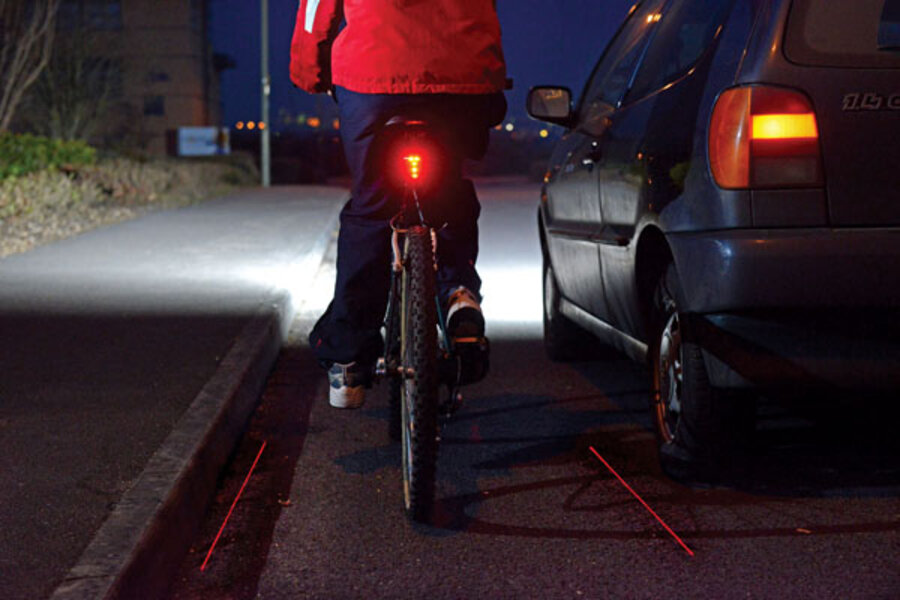High-tech tools for urban cyclists
Loading...
New York City's first automobile accident occurred in 1896 when a driver struck and injured a bicyclist. Cars and bikes have had an uneasy relationship ever since.
Jonathan Lansey, a bike commuter in Boston, says that just the other day a car traveling in the left lane started to swerve across his lane to make a right turn. "It was a classic right hook," he says. But Mr. Lansey came prepared.
He and a small team have designed a car horn for bikes. While the ring of a traditional bicycle bell often goes unnoticed amid the sounds of the city, this horn honks at the same volume as a sedan's and, like those in most cars, plays two tones simultaneously, making the beep easier to hear in a noisy environment.
"Without a way to get drivers' attention, you feel almost helpless," Lansey says. "But when that car started to cut in, I honked the horn. And they didn't just stop, they pulled back into their lane." Bicyclists can preorder the horn, called Loud Bicycle, online for $95. Lansey hopes to start sending out the final product by October.
Loud Bicycle arrives amid a flurry of new gadgets aimed at making cycling safer.
The Orp horn can honk in two different ways. The inch-wide attachment comes with a pressure-sensitive switch. A light flick releases a friendly chirp. A heavy hand lets out a louder wail. The $45 device also sports bright LED headlights.
The $30 Xfire Lighting System not only has a taillight, but also lays down its own bike lane. Its two lasers paint a thin line on either side of a bicycle, reminding nearby drivers to keep a safe distance. (See image, above.)
High-tech lights and horns share the same Achilles' heel, however: battery life. Loud Bicycle, Orp, and the Xfire run on rechargeable batteries that can be renewed by plugging the devices into a computer or wall outlet via a USB cable.
A start-up called Siva wants to ease the hassle of constantly recharging your gear. Its $99 Atom bicycle generator can recharge batteries as you pedal. The device connects to the back wheel and will generate power as long as the bike cruises faster than 3 miles per hour (walking speed). Atom can connect directly to a rechargeable device, or riders can detach its battery pack to power up a smart phone.
Siva cofounder David Delcourt says his team designed the Atom to help cyclists in the developing world. For every 10 Atom generators the company sells, he promises to donate one to charity.
[Editor's note: This is an updated version of an article that appeared in the Sept. 2 issue of the Monitor weekly magazine.]







